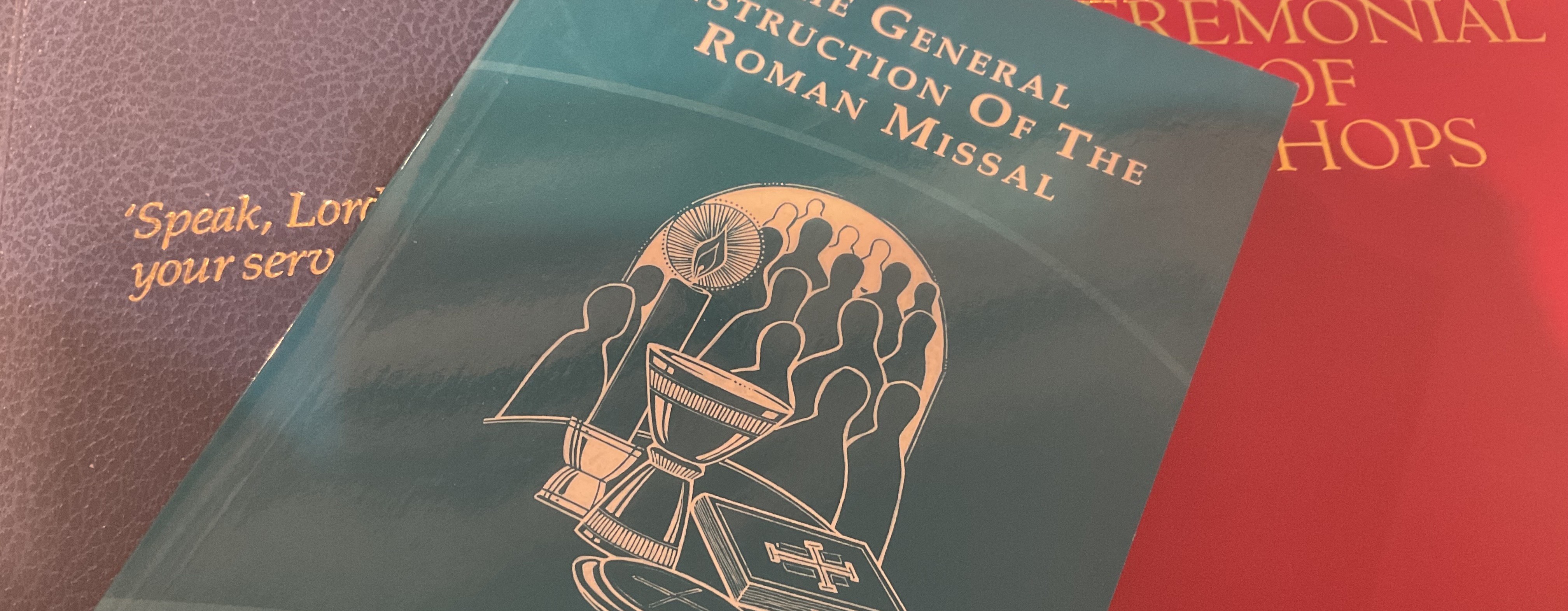Liturgical Documents
National Liturgical Council

In general, the Code of Canon Law (1983) does not try to determine liturgical norms or rites: it defers to the liturgical books (see CCL 2). To discover what the Church teaches on the liturgy, therefore, the first place to go is to the liturgical books themselves. Each book contains not only the prayers and structures of the liturgy, but also an introduction (called the praenotanda). Among the most important of these are the General Instruction of the Roman Missal and the General Introduction of the Lectionary.
All of the liturgical rites were reshaped and revised by mandate of Vatican Council II: its liturgy document Sacrosanctum Concilium (1963) is of paramount importance.
There are several further considerations which help us to understand Church documents on liturgy. First of all, who issued the document? Documents from the Holy See generally have a broader scope than those that come from a local bishops conference or an individual bishop. If it comes from Rome, is it a papal document or does it come from some part of the curia (for example, from the Dicastery for Liturgy and the Discipline of the Sacraments).
Secondly, what kind of document is it? For example, a papal document may be very formal (an apostolic constitution or a motu proprio) or quite informal (a homily or an address to a particular group). This will change the way it is received and used. Many of the documents from the Roman Curia are administrative rather than legislative – there are directories, decrees, declarations, instructions, norms and letters of various kinds. Often the documents are theological and pastoral. They set out the principles for good liturgy. This does not make them any less important because they give us direction in how we are to celebrate the liturgy. It is not only a matter of determining the binding constraints of the law.
The Directory for Masses with Children (1973), for example, is an administrative document with rich pastoral guidelines that opens up a broad scope for celebrating a fruitful liturgy with young ones. Many of its provisions are different from those given in the Roman Missal for the usual parish Mass. This does not make either one right or wrong. It is not a matter of trying to determine which document has greater authority. Rather we need to explore the principles and ask questions such as: Why? What is the aim here? How do we juggle the various requirements so that the liturgy achieves its purpose within this particular liturgical assembly?
The beauty and wonder of the liturgy cannot be captured in laws; it is about encountering Christ and concerns our participation in the Paschal Mystery. Pope Francis has often criticised a rigorist, rubrical approach to the liturgy. But this does not in any way imply a creative free-for-all. In his 2022 Apostolic Letter Desiderio Desideravi, the pope wrote:
I would like this letter to help us to rekindle our wonder for the beauty of the truth of the Christian celebration, to remind us of the necessity of an authentic liturgical formation, and to recognise the importance of an art of celebrating that is at the service of the truth of the Paschal Mystery and of the participation of all of the baptised in it, each one according to his or her vocation. All this richness is not far from us. It is in our churches, in our Christian feasts, in the centrality of the Lord’s Day, in the power of the sacraments we celebrate. Christian life is a continual journey of growth. We are called to let ourselves be formed in joy and in communion (DD 62).
